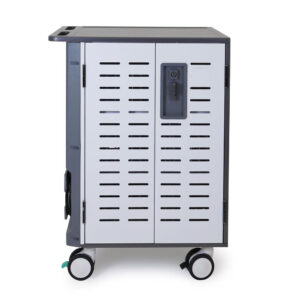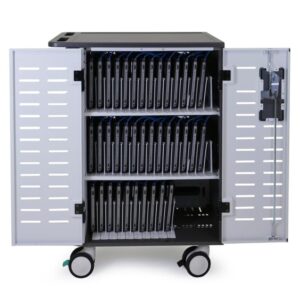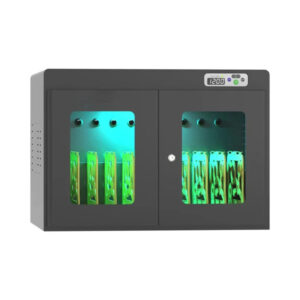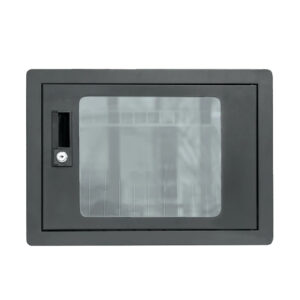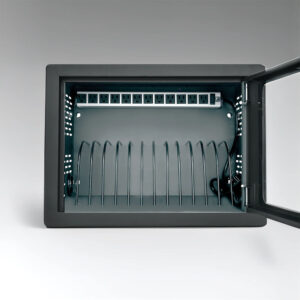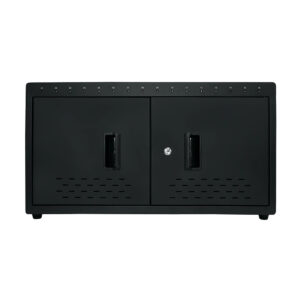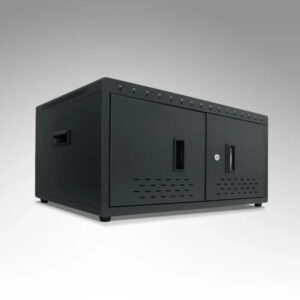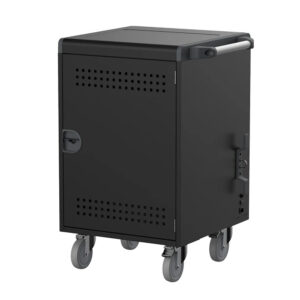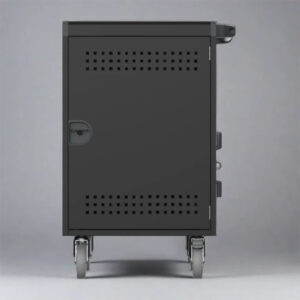Summary
Charging cabinets are specialized storage units designed to charge and secure multiple electronic devices simultaneously, primarily in educational, corporate, and healthcare environments. Their notable ability to enhance device management and security has made them essential in settings that rely heavily on technology. As educational institutions increasingly integrate digital tools into their curricula, the demand for charging cabinets has surged, facilitating easy access to fully charged devices while minimizing theft and damage risks.
These cabinets feature advanced designs that prioritize aesthetic flexibility, functionality, and portability. Many models are equipped with smart charging technology that optimizes charging speeds, extends device lifespan, and includes robust security features such as locking mechanisms and access controls to protect valuable assets. The durability of charging cabinets also ensures long-term reliability, making them a cost-effective investment for organizations aiming to manage their devices efficiently while promoting a culture of responsible technology use.
Despite their advantages, selecting an appropriate charging cabinet presents challenges such as compatibility with various device models and financial considerations. Institutions must evaluate the total cost of ownership, including maintenance and repair expenses, while also ensuring that their chosen cabinets can adapt to future technological advancements and user needs.
The evolving landscape of charging cabinets is increasingly influenced by trends in sustainability and the integration of smart technologies, setting the stage for a future where these units not only enhance convenience and efficiency but also contribute to broader environmental goals and urban infrastructure development.
Table of Contents
Design and Features
Charging cabinets are specialized storage units designed to accommodate and charge multiple electronic devices simultaneously. Their design incorporates various features to enhance functionality, security, and user experience, making them suitable for diverse environments such as educational institutions, corporate offices, and public spaces.
Aesthetic Flexibility
The aesthetic possibilities of charging cabinets are expansive, often featuring customizable designs to suit corporate or private applications. Materials like polycarbonate resins allow for transparency or any color finish, while the integration of molded shapes with metals or other plastics caters to specific design preferences. Such versatility ensures that charging cabinets not only serve practical purposes but also align with the surrounding decor.
Functionality and Portability
Portability is a critical aspect of charging cabinets, especially in dynamic environments. Many models are designed with wheels or lightweight constructions to facilitate easy movement, adapting to changing needs and layouts. This feature is particularly advantageous in educational settings where classrooms may require flexible arrangements for technology use.
Security Features
Security is paramount in the design of charging cabinets. Robust locking mechanisms, including key locks, digital keypads, or RFID access, are essential for preventing unauthorized entry and protecting valuable devices. Institutions recognize the importance of these features, particularly as theft rates increase in educational environments, underscoring the necessity of proactive security measures.
Capacity and Compatibility
Charging cabinets come in various sizes and configurations to accommodate different types and quantities of devices. Evaluating the storage capacity is crucial for institutions to ensure that the cabinet meets their specific needs. Furthermore, compatibility with diverse device models, including any protective cases, is essential for seamless integration into existing technology ecosystems.
Advanced Charging Technology
Many modern charging cabinets are equipped with smart charging technology, optimizing charging speeds and preventing overcharging. This feature extends the lifespan of devices and ensures they are fully charged when needed. Efficient power management also enhances the usability of charging cabinets, making them vital for organizations that rely heavily on technology.
Durability and Build Quality
The construction quality of charging cabinets is vital for long-term reliability. Cabinets made from high-quality materials ensure they can withstand the rigors of daily use in high-traffic environments. Clients often describe brands known for robust and easy-to-use designs as the “Mercedes of carts,” highlighting their commitment to quality and functionality.
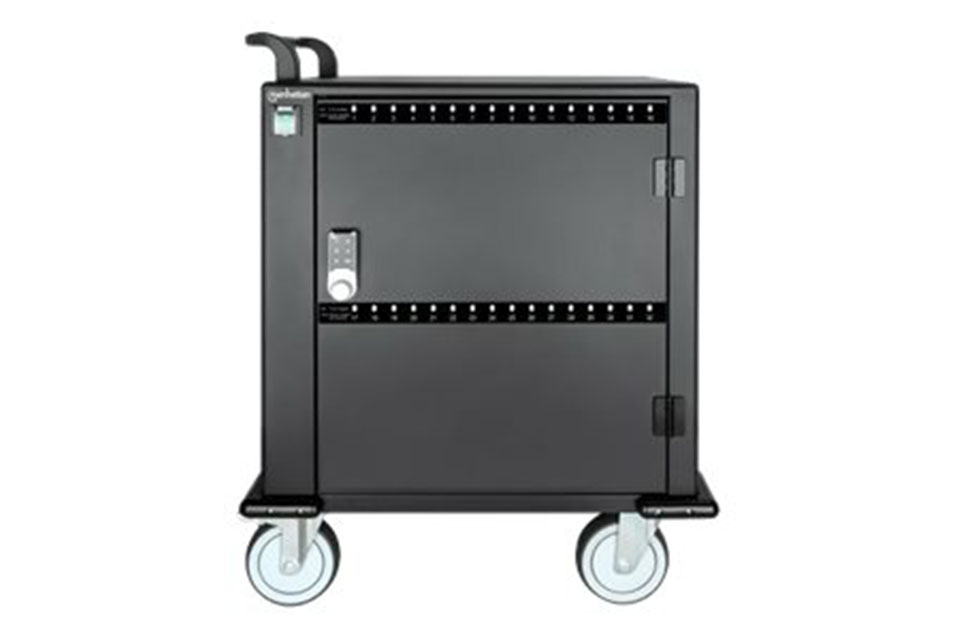
Applications
Charging cabinets are versatile solutions that serve multiple purposes across various sectors, enhancing productivity and efficiency in educational institutions, healthcare facilities, and corporate environments.
Educational Institutions
In schools and colleges, charging cabinets provide a secure and organized way to manage mobile devices such as laptops and tablets. They facilitate easy access to technology while protecting devices from theft and damage, creating a conducive learning atmosphere. As reported, the installation of charging stations has increased, reflecting a commitment to integrating technology into the educational curriculum. Additionally, these solutions are tailored to meet the needs of diverse learning environments, ensuring that all students have equal access to digital resources. For instance, the pre-installed Learning Management Systems (LMS) on devices stored in these cabinets allow students to follow specific timetables set by educators, enhancing their learning experience.
Corporate Environments
In corporate settings, charging cabinets offer customizable configurations that can adapt to various needs, whether for collaborative meetings, conferences, or everyday office use. These units allow organizations to provide power where it is needed most without the requirement for extensive setup, making them ideal for pop-up activations and short-term events. Companies like LocknCharge and Kensington emphasize the importance of security in their designs, ensuring that valuable technology is protected while remaining user-friendly. As businesses increasingly rely on technology, the integration of charging cabinets contributes to a more efficient and organized workspace, facilitating better management of devices and resources.
Healthcare Facilities
Healthcare establishments are increasingly adopting charging cabinets to improve their operational efficiency and demonstrate their commitment to environmental sustainability. By installing charging points, healthcare facilities not only enhance their technological capabilities but also position themselves as leaders in ecological responsibility. This practice is particularly beneficial in consolidating the reputation of these institutions, as they encourage staff and visitors to engage with sustainable practices while also providing necessary resources for medical technology.
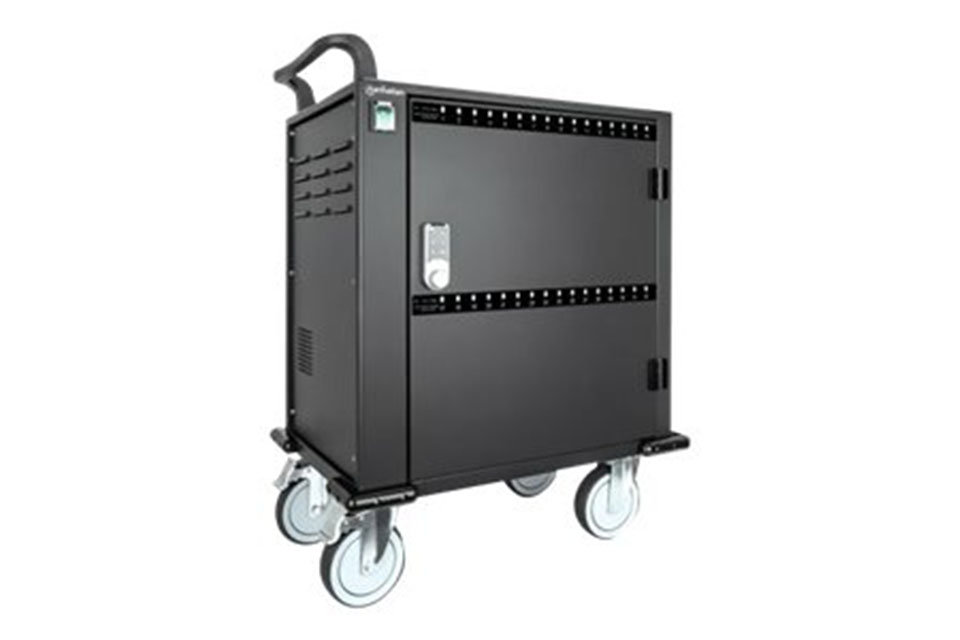
Benefits
Charging cabinets offer a variety of significant benefits across different sectors, particularly in educational and healthcare environments.
Enhanced Device Readiness
One of the primary advantages of charging cabinets is that they ensure devices are always ready for use. By providing a dedicated space for charging, these cabinets help to eliminate downtime, ensuring that devices are fully charged and available when needed. This capability is crucial in settings where timely access to technology can impact learning outcomes or patient care.
Improved Security
Charging cabinets enhance the security of devices by providing a controlled environment for their storage. This reduces the risks of loss or theft, which is especially important in schools and healthcare facilities where devices are frequently in use. The implementation of security features such as reinforced locks and alarm systems further protects these valuable assets, ensuring that only authorized personnel have access.
Streamlined Device Management
These cabinets facilitate efficient device management processes, automating the distribution and collection of devices. This is particularly beneficial in educational institutions, where students and staff can easily check out devices using a simple system, thus reducing the administrative burden associated with manual tracking. Additionally, healthcare organizations benefit from this efficiency, allowing staff to quickly access replacement devices when needed, maximizing operational effectiveness.
Long-Term Cost Efficiency
Investing in high-quality charging cabinets can lead to significant long-term savings. These cabinets are designed for durability, often accompanied by extended warranties that reduce replacement costs over time. Furthermore, energy-efficient models can lower operational costs by up to 30%, making them a financially sound choice for institutions aiming to manage their budgets effectively.
Enhanced Learning and Engagement
In educational settings, charging cabinets not only ensure that devices are ready but also contribute to an enhanced learning experience. They provide a structured environment that promotes the responsible use of technology, thereby fostering a culture of engagement among students and staff alike.
Positive Customer Experience in Retail
Charging cabinets also find utility in retail environments, where they can enhance customer satisfaction. By offering charging solutions, retailers demonstrate an understanding of customer needs, encouraging longer visits and increased spending. This convenience can transform a simple shopping trip into a more enjoyable experience, further encouraging customer loyalty.

Challenges and Considerations
Selecting a charging cabinet for devices such as iPads presents several challenges and considerations that must be addressed to ensure an effective solution in educational environments.
Portability and Design
One of the primary challenges is the need for portability in dynamic environments. The ability to easily move charging units can significantly enhance their functionality, particularly in classrooms that require frequent reconfiguration. Models that include wheels or are designed to be lightweight can facilitate this adaptability, ensuring that storage units meet varying needs as classroom layouts change.
Compatibility
Compatibility is another critical factor to consider. It is essential to ensure that the charging cabinet can accommodate the specific iPad models used within an organization, including any protective cases. Cabinets that seamlessly integrate into existing technology environments can help prevent issues associated with device compatibility and enhance overall usability.
Financial Implications
When investing in charging cabinets, financial considerations are paramount. Initial costs can vary significantly based on brand, features, and capacity, with prices typically ranging from $200 to $1,500. Schools must evaluate different options to find solutions that fit their budgets while maintaining quality. Furthermore, the total cost of ownership, including maintenance and potential repair expenses, should also be factored into the decision-making process, as these costs can impact the long-term value of the investment.
Security Features
Effective security features are essential in protecting valuable devices against theft and damage. Many users prioritize cabinets with robust locking mechanisms and durable construction, which offer peace of mind regarding the safety of their equipment. Feedback from users emphasizes the importance of these features, noting that high-quality cabinets can contribute to the longevity and reliability of the devices stored within them.
Customer Support and User Experience
Customer support plays a vital role in user satisfaction. Brands that provide responsive and helpful assistance during installation and troubleshooting often receive higher ratings from users. Positive experiences can significantly enhance overall satisfaction with the product, making it essential for institutions to consider customer support options when selecting a charging cabinet.
Future Growth and Adaptability
As educational technology continues to evolve, institutions must consider future growth when selecting a charging cabinet. Opting for a solution that can accommodate potential increases in the number of devices or enhanced security features is prudent. The increasing integration of technology in education necessitates solutions that can adapt to changing requirements and demands.
Seeking Expert Advice
Consulting with technology specialists or peers in the field can provide valuable insights into the best options available. Their experiences can help navigate the complexities of selecting a charging solution that meets specific needs, ensuring that educational institutions make informed choices.
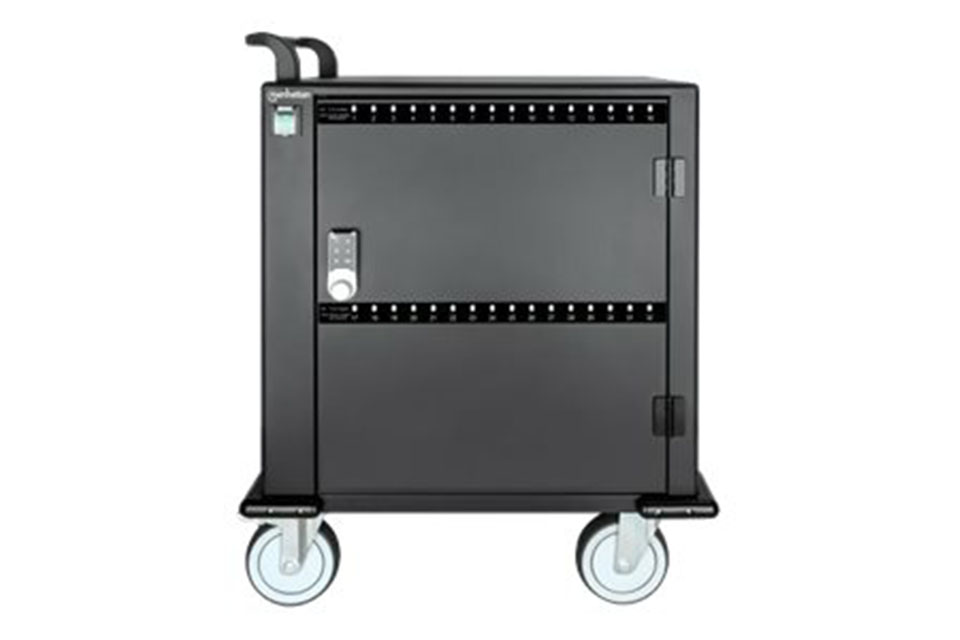
Future Trends
Technological Innovations
Emerging technologies are transforming how charging cabinets are designed and utilized. For instance, inductive charging systems, which transfer electricity without physical connectors, are gaining traction. These systems provide an alternative charging method that enhances convenience, especially in urban settings where space is limited. Additionally, advancements in battery management technologies will likely lead to more efficient energy storage and distribution within these cabinets, further supporting the integration of renewable energy sources such as solar and wind power.
Enhanced Accessibility
As electric vehicle adoption continues to rise, the need for charging access will shift from primarily residential to more public and workplace settings. This trend will drive the development of charging cabinets that are not only secure and efficient but also accessible to a broader range of users, including those in underserved communities. Governments and local authorities are likely to prioritize equitable access, ensuring that all demographics can benefit from EV charging infrastructure.
Sustainable Practices
Sustainability will be a key focus in the future of charging cabinets. Many new models are expected to incorporate environmentally friendly materials and practices, aligning with the broader push towards decarbonization and sustainable urban mobility. Charging stations integrated with renewable energy sources will become commonplace, enabling users to charge their vehicles with cleaner energy and reducing reliance on fossil fuels.
Smart Infrastructure Integration
The integration of smart technologies into charging cabinets will enhance user experience and operational efficiency. Smart energy management systems will allow for real-time monitoring and control, optimizing charging times based on energy availability and demand fluctuations. Such capabilities will be critical as cities move towards smart infrastructure that supports sustainable urban living.
Future Growth and Economic Models
As the charging cabinet market evolves, new business models are likely to emerge. Subscription-based services for EV charging may become more common, offering users flexible payment options and incentivizing the use of renewable energy. This shift will not only promote economic growth within the sector but also foster a culture of sustainability as consumers increasingly prioritize environmentally friendly practices in their transportation choices.



